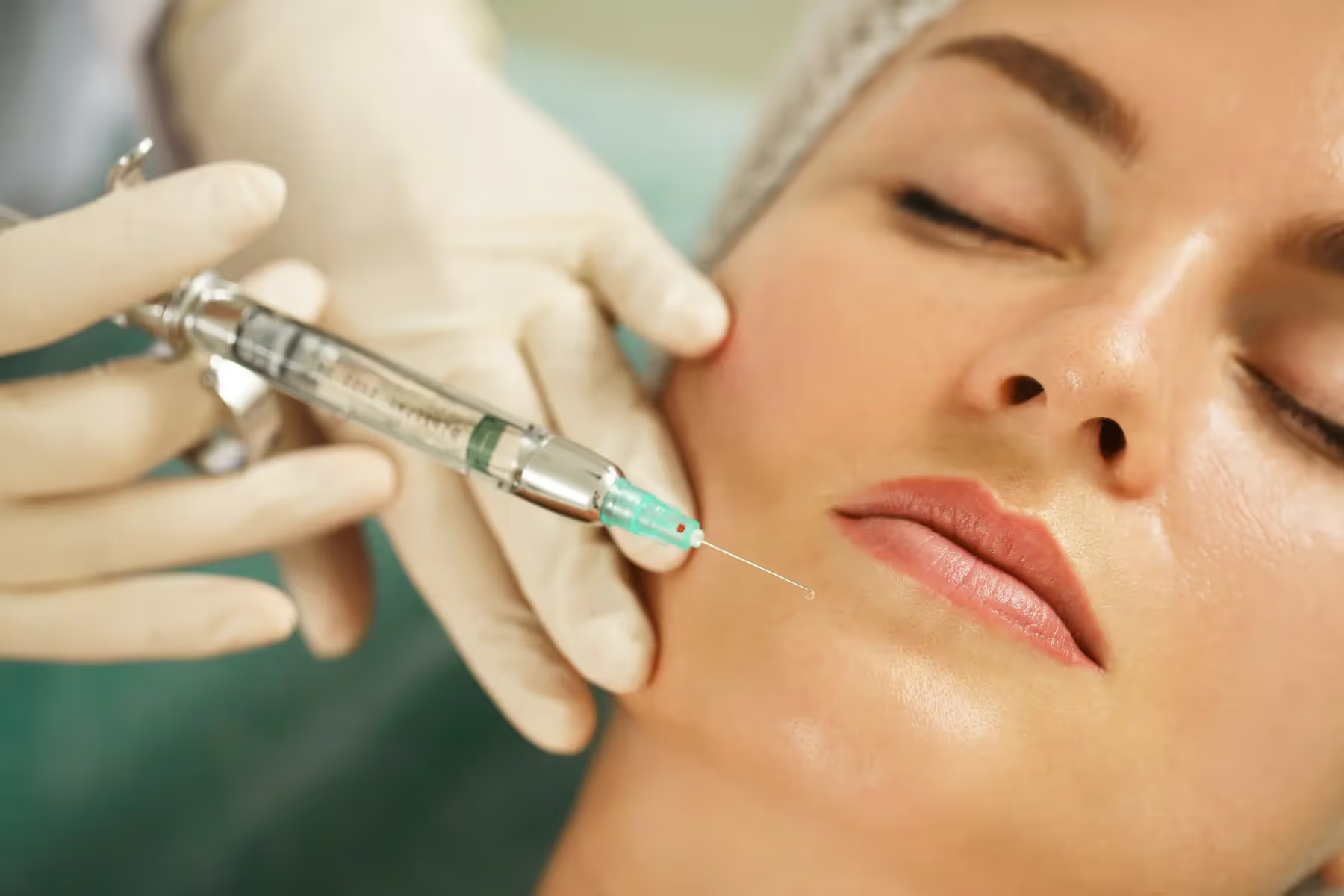Med spas (medical spas) are medical practices that leverage the latest medical tech to offer their clients aesthetic rejuvenation. Popular due to their effective, non-surgical cosmetic treatments, the med spa industry has exploded over the last two decades.
Grand View Research estimates that the medical aesthetics industry was worth $14.4 billion in 2021 and will reach $16.4 billion by the end of 2022. Another study by Global Industry Analysts predicts that the market for med spa (medical spa) services will almost double over the next 5 years, projected to reach $29.7 billion by 2027.
All said, the industry is booming, and it provides an excellent opportunity for health care professionals to use their skills to meet the needs of a growing market.
This article will discuss what med spas are (and are not), the treatments they commonly offer, and who can administer them. So, if you’re looking to work at a med spa or even open your own, this article will provide what you need to kick off your investigation.
What is a Med Spa?
The American Society of Plastic Surgeons defines a med spa as a “combination of an aesthetic medical center and a day spa that provides non-surgical aesthetic medical services under the supervision of a licensed physician.”
The Texas Medical Institute definition provides more depth, stating that med spas “are powered… by results. Med spas offer specialized treatments and cosmetic services – such as injections and treatments to improve skin tone and the appearance of wrinkles – but in a relaxing, welcoming facility.”
In general, med spas are medical businesses that offer their clients non-surgical medical treatments to help them look their best. Using techniques like Botox, laser hair removal, and chemical peels (to name just a few), clinicians help their clients reach their aesthetic goals, including things like “removing wrinkles,” “skin improvement,” or “looking younger.”

Med Spas vs Day Spas?
While the word “spa” in med spa accurately invokes thoughts of relaxing spaces with a focus on health and beauty rejuvenation, med spas and day spas differ significantly in how they offer that to their patrons.
At a traditional day spa, you can expect a combination of a relaxing environment, non-invasive aesthetic treatments (such as facials or peels), and physical therapy. Aestheticians, masseuses, massage therapists, and physiotherapists are some of the professionals who offer services at what we’d call a traditional spa.
On the other hand, medical spas offer various non-surgical medical procedures, including injections, laser and tight therapy, and chemical treatments, to name a few. The focus of these businesses is to use medicine to help clients improve their cosmetic appearance, such as improving skin texture or getting rid of wrinkles.
Because med spas offer medical-grade services administered by medical professionals, they typically provide treatments that are far more effective in achieving clients’ aesthetic goals. Medical professionals such as physicians, physician’s assistants, nurse practitioners, registered nurses, and aestheticians are standard team members at a med spa.
The following table summarizes the key differences between a med spa and a day spa:
What Treatments Do Med Spas Offer?

Med spas offer a wide range of treatments, from Botox and other neuromodulator injections to dermal fillers, microdermabrasion, and body sculpting. As new technologies are developed, the list of treatments is constantly expanding. Here are some of the major categories of treatments offered at a med spa, along with some examples of each.
Injectables
Injectables are injections of a drug/chemical under the top layer of the skin that has specific effects on the underlying tissues. In general, injectable treatments help restore facial volume (such as lifting sunken cheeks or temples or enhancing lips) or smooth lines (such as removing parentheses, smile lines, marionette lines, or crow’s feet).
Facial injectables can be divided into two broad categories: Dermal Fillers and Neuromodulators.
Dermal Fillers
Dermal fillers are injections that reduce facial lines and restore volume and plumpness to the face and lips. There are many filler products and techniques on the market, each offering different benefits for different areas of the face (cheeks vs lips, deep lines vs lighter lines, etc.). A few fillers available today include:
- Juvéderm (Hyaluronic Acid)
- Restylane (Hyaluronic Acid)
- RHA (Hyaluronic Acid)
- Radiesse (Calcium Hydroxylapatite)
- Sculptra (Poly-L-lactic Acid)
- Bellafill (Polymethylmethacrylate)
Neuromodulators
Neuromodulators are injected into facial muscles to block specific chemical signals from nerves, which relaxes the muscle and smoothes the appearance of the skin. The most well-known neuromodulator is Botox, the effects of which typically last 3-4 months. Other popular neuromodulators include Dysport, Xeomin, Jeuveau, and Daxxify, recently approved by the Food and Drug Administration (FDA).
Skin Treatments
Med spas also offer various skin treatments, including
- MicroPeel
- Microdermabrasion
- Medicated facials
MicroPeel is a popular skin treatment that relies on chemicals to remove dead skin cells and helps improve aesthetic appearance with minimal recovery time. Results become visible within a few days after treatment.
Microdermabrasion is a physical exfoliation procedure done using specialized equipment, which causes friction on the skin using tiny crystals. After abrasion, the body reacts to it as if it were a wound and starts the natural healing process.
Laser/Energy-Based Treatments
The high-focused energy of lasers and light can be employed for various skin treatments, each often using specialized equipment and training. Here are a few of the energy-based treatments available at med spas:
- Full-field laser resurfacing: Full-field ablative laser resurfacing uses lasers to remove the outer layer of the skin and encourage collagen development in the underlying tissue to improve the appearance of the skin. Full-face treatments take about an hour to administer and require up to 7 days of recovery.
- Fractional skin resurfacing: In contrast to full-field treatment, fractional skin resurfacing uses lasers to put microscopic holes in only a fraction of the skin to promote healing and rejuvenation.
- Microablative RF treatment: This type of skin resurfacing uses microneedles and radio waves to slightly damage the skin, encouraging healing. This improves the body’s collagen production, increasing the skin’s flexibility.
- IPL (Intense Pulse Light) Treatments: This light therapy uses intense light (but not as intense as lasers) to heat the skin and activate healing functions in targeted tissues.
Other Common Non-Surgical Med Spa Treatments
As mentioned, med spas offer many other treatments primarily focused on improving cosmetic appearance using new medical technologies. Some examples include:
- Microneedling
- Dermaplaning
- PRP (Platelet-rich plasma)
- Treatment for varicose veins
- Microblading
- IV Therapy
- HRT (Hormone replacement therapy)
- Hair loss treatment (laser/PRP)
- Vaginal rejuvenation
- Weight loss treatment
- Tattoo removal
Who Performs Treatments at a Med Spa?

Med spas need to have qualified medical professionals on staff. Depending on the state, there may be different regulations about who can provide treatments. Generally, a physician is the medical authority in a med spa and can delegate treatments to nurses (RNs), physician assistants (PAs), or nurse practitioners (NPs).
Aesthetic nurse injectors, for instance, usually administer treatments, though in many cases, they are supervised by a licensed physician.
What is an Injector?
Injectors are qualified persons trained in the act of injecting medications via syringe. The role of an injector can be filled by PAs, NPs, RNs, or sometimes even a physician, depending upon their level of training and state requirements. For instance, several states, such as Idaho, allow dentists to perform Botox injections, but they must gain specific training and certifications.
In certain states, physician supervision isn’t necessary, and state regulations vary. For example, in most states, NPs can perform injections, including dermal fillers or toxins, as long as they have demonstrated training and experience and have a physician’s oversight.
What is Aesthetic Nursing?
Aesthetic nursing specializes in cosmetic treatments and procedures, ranging from Botox and filler injections to lasers for hair removal or skin rejuvenation.
Aesthetic nurses perform a variety of duties, such as
- Obtaining a client’s background and medical history
- Explaining the treatment step-by-step to clients
- Preparing the medical area
- Sterilizing all equipment
- Injecting/treatment (under supervision)
- Assessing the recovery process
Planning to Launch Your Own Med Spa?
Med spas provide non-invasive medical treatments to improve a person’s appearance, from tightening skin to reducing wrinkles. With the way the market is positioned to expand even further over the next few years, medical spas offer a fantastic career opportunity to health care professionals looking to move into an exciting new field.
As you explore what it will take to open your own med spa, remember it doesn’t have to be complicated — Moxie is your growth partner as you launch. We help you to:
- Find a medical director
- Secure appropriate insurance
- Select an initial location
- Design your launch menu and pricing
- Promote your services
Moxie gets you up and running 3x faster at half the cost compared to getting started alone: Learn More About Moxie and How We Work >
*This article is intended to provide a general guide on what professional licenses and conditions are needed to operate a practice or perform certain treatments. This information alone does not authorize, certify, or confer the ability of anyone to perform these treatments, practice outside their scope, or violate the corporate practice of medicine.
While based on currently available information, the rules and policies on scope of practice issues and ownership can, and do, change frequently. Specific training, education, supervision, protocol and regulatory requirements will differ depending on each person's situation in their state. Therefore, each person must examine their own professional situation, skill level, regulating board guidance, and scope of practice before proceeding.
You should not act upon this information without seeking knowledgeable legal counsel that takes into account the laws of your specific jurisdiction. All uses of the content of this site, other than personal uses, are prohibited.
When you're ready to take the next step in launching or growing your aesthetic practice, here are 3 ways Moxie can help:




